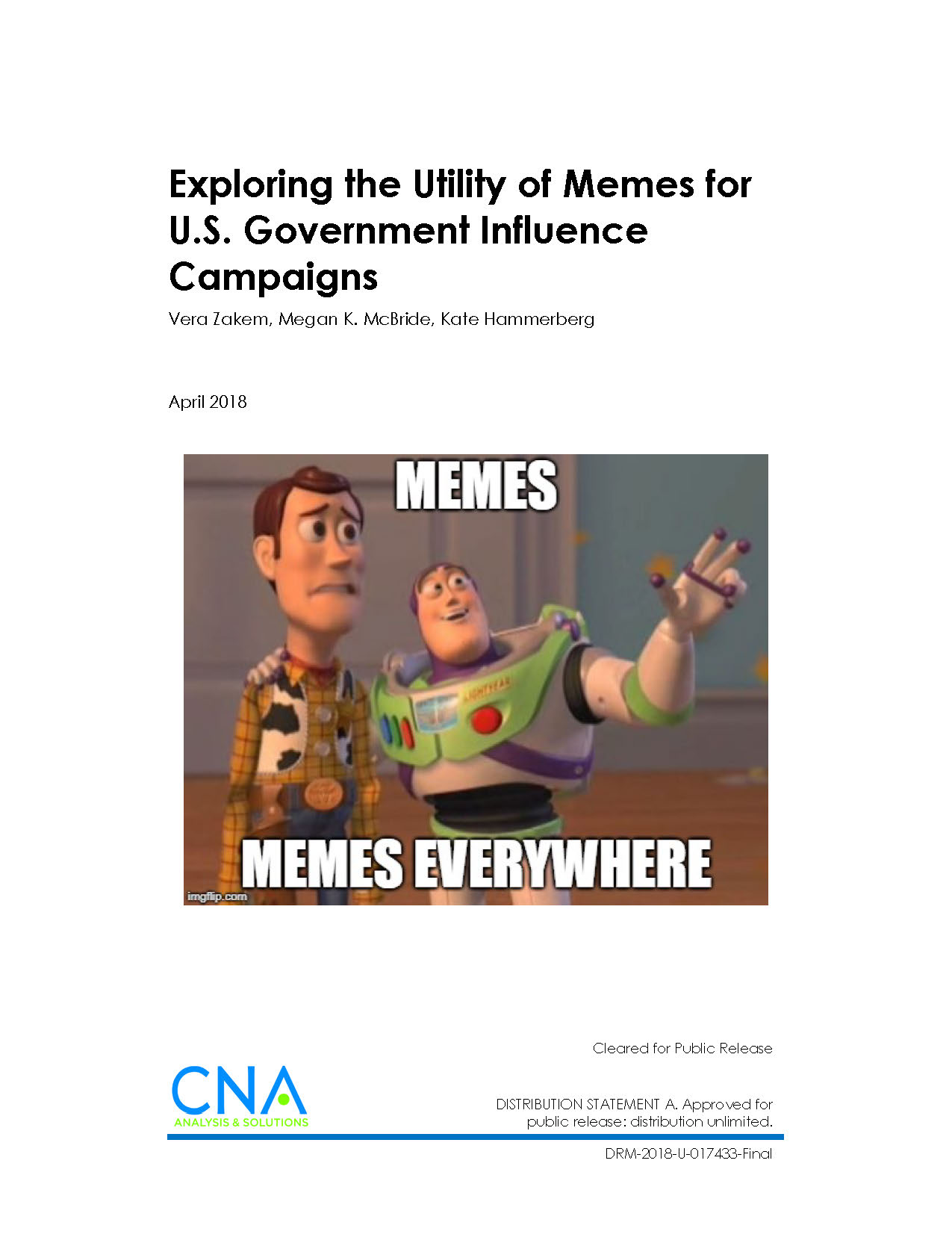If you’ve spent any time online, you have probably encountered a meme. There are thousands of memes in circulation (with new ones being created regularly) on a variety of social media websites.
While these images are popularly known today as “memes,” a closer look at the concept reveals a nuanced and complex set of ideas worthy of further inquiry. The very concept of the term remains contested, and has evolved considerably since first introduced in 1976, but for the purposes of this report we define meme as a culturally resonant item easily shared or spread online.
While individual internet users have been using memes online for years, more recently there have been suggestions that memes might also have utility for the U.S. government (USG) as part of its information and influence campaigns to counter state actors such as Russia and non-state actors such as the Islamic State. However, the state of research on both memes and this type of activity—which we are referring to as memetic engagement—remains nascent.
To help address this, CNA initiated an exploratory study of the applicability, utility, and role of memes and memetic engagement within USG influence campaigns. The purpose of this study is to further the conversation on memetic engagement within the USG influence community, as it considers novel approaches to countering state and non-state actors in the online information environment.
To do this, CNA reviewed the literature on the history of memes, memetic engagement, and so-called “memetic warfare,” along with psychology and marketing literature that explores the role of virality and persuasion in changing people’s attitudes and behaviors. Upon completion of the literature review, we conducted semi-structured conversations with multiple subject matter experts (SMEs) to better understand memes and memetic engagement. We used these insights, along with a selection of specific past examples, to develop an epidemiological framework to explore memetic engagement. Drawing on this literature, semi-structured conversations, and analysis of the meme examples, we developed a set of preliminary observations and concluding thoughts on the applicability of memes to influence campaigns and areas for further research.
Download reportDISTRIBUTION STATEMENT A. Approved for public release: distribution unlimited.
Details
- Pages: 84
- Document Number: DRM-2018-U-017433-Final
- Publication Date: 4/1/2018
